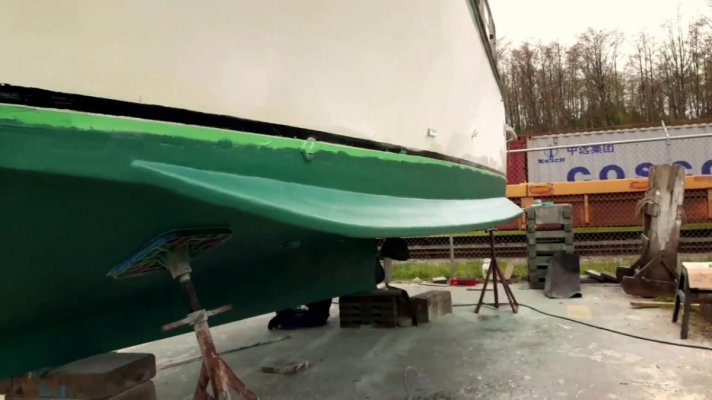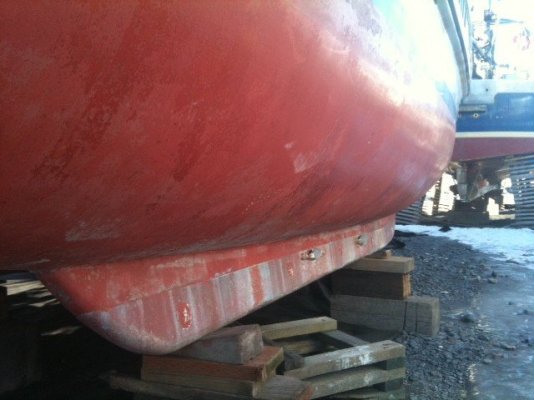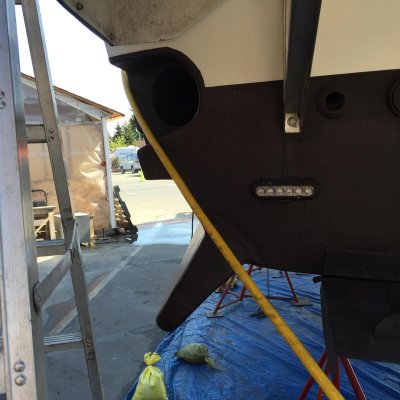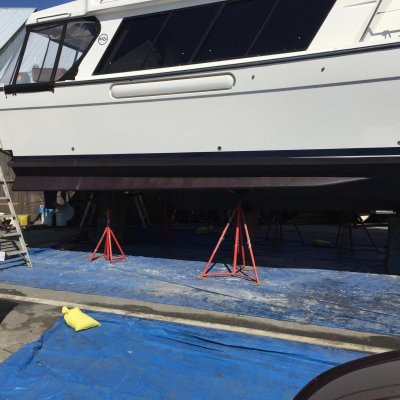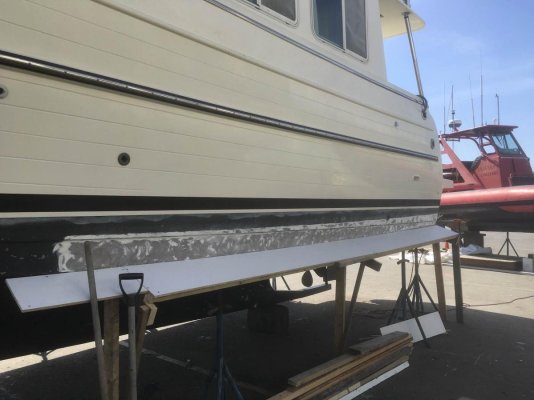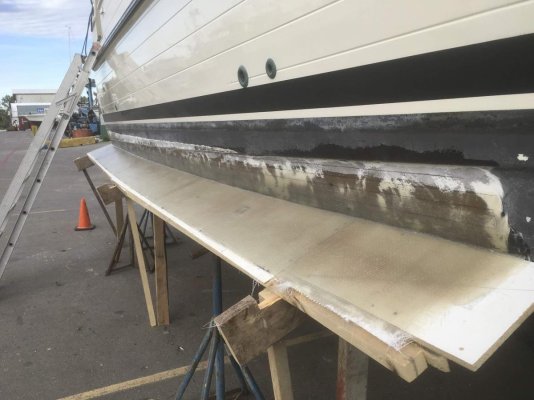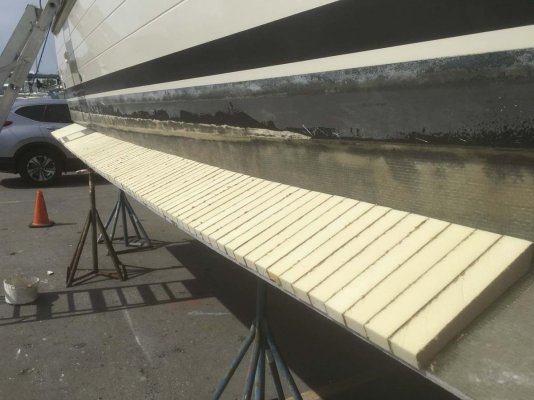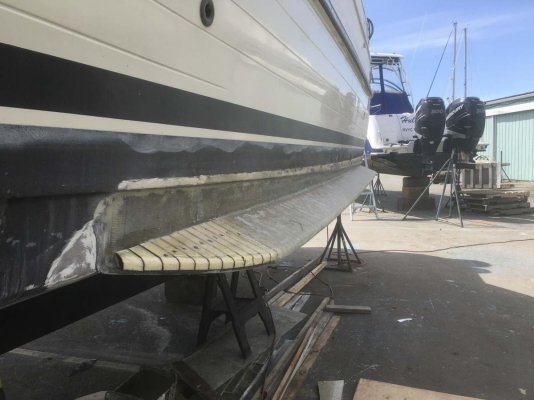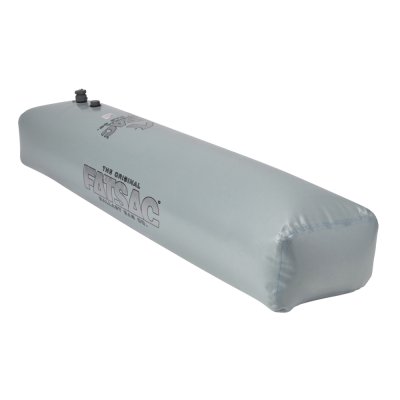The solution for me was an "anti-roll bag." About $160 invested. I fabricated a large bag out of vinyl-coated polyester. It required heat welding, which can be done as a DIY. I installed a fill port. Placed crosswise on the flying bridge to cover the entire width and then some. Filled with about 25 gallons of water. It operates like a anti-roll tank (ART), but with some differences. An ART is usually "free surface," meaning that the fluid in the tank is free to move about on its surface.
Because free surface water moves "too fast" from side-to-side, baffles are usually installed to slow the wave generated by the boat's roll. The idea is to get the water to move such that the wave surge reaches the low side of the boat just as the natural roll period is lifting that side. On a boat my size (and your size) it is possible to deaden the effect of a wake by running from side to side on the boat in opposition to the effect of the wake. It is even more effective if you are on the flying bridge. That is essentially what the ART does, but it "runs" farther, faster, and longer than I am able to jump back and forth. It works underway, at anchor, when I'm asleep, and when I'm away from the boat. Try that with another stabilization system.
I thought that there are probably several other ways to slow down the wave in the tank besides using baffles. Increase the viscosity of the fluid, for instance. Or don't use a tank at all. Use a bag that would apply tension to the "free surface." You have probably seen the little desktop "wave generators" that have blue water covered with oil between glass. The oil slows down the blue water to make a gentile, soothing wave. Water in a bag responds similarly by slowing the wave action.
All this is to say that I have a big bag of water on my flying bridge. When I tested it, I needed to create a "baseline" as to how my boat rolled without the tank. I put an inclinometer on my helm and had my wife rock the boat from the dock until it reached a 7 degree roll, then timed 10 full rolls. My "snappy" roll period is about 3.4 seconds. Then I filled the tank and had her rock the boat. She couldn't get it to roll 7 degrees, so we changed places. I stood on the dock with the lines loosened and had her watch the inclinometer. I could not get it to rock 7 degrees, even by timing my jumping onboard. I pooped out. We timed it anyway, but it stopped rolling before 10 rolls.
There's my scientific evidence that an anti-roll bag works.
The first real test was going around Cape Caution. We had been impressed by the way that the boat handled wakes in Puget Sound and the Strait of Georgia, but Cape Caution was two hours of sea swell on the beam. Easy peasy. I then emptied it for cruising further on north. It was empty when we crossed Seaforth Channel and I had complaints from the wife. Stuff hit the cabin floor for the first time. Once we got back to a place where water was available (Ocean Falls), the bag got refilled. I could fill it with buckets of saltwater, but it would take an hour of tedious work.
I think there are a couple of improvements I could make, but for the price and ease of "installation," I'm happy with it for this trip. Should be back south in a month or so and can give more details. Just happened to get Wi-Fi at Dawsons Landing and could reply to this thread. First decent Wi-Fi in several weeks, so of course I went to TF. Something to think about before you haul out and glue $10K of stuff to the hull.

